Religion, reported Inside Higher Ed last week, is now the most popular theme of historical study in America, according to a recent survey conducted by the American Historical Association. For the past fifteen years that distinction belonged to culture and prior to that, to social history. That the turn to religion represents at once a natural ramification of, and a challenge to, the methods and concepts particular to these formerly prevalent modes of historical study is indeed a possibility suggested by Robert Townsend’s analysis of the AHA survey.
In our latest off the cuff feature, several scholars respond to the news that the proportion of historians who specialize in religion continues to climb, and to reflect on both the causes and the significance of of this distinct, and now confirmed, trend in historical studies.
Jon Butler, Howard R. Lamar Professor Emeritus of American Studies, History, and Religious Studies, Yale University
David A. Hollinger, Preston Hotchkis Professor of American History, University of California – Berkeley
John Schmalzbauer, Associate Professor of Religious Studies and Blanche Gorman Strong Chair in Protestant Studies; Missouri State University
Jonathan Sheehan, Associate Professor of History, University of California – Berkeley
Grant Wacker, Professor of Christian History and Director of Graduate Studies in Religion, Duke Divinity School
______
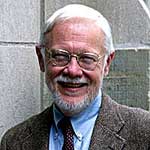 Jon Butler, Howard R. Lamar Professor Emeritus of American Studies, History, and Religious Studies, Yale University
Jon Butler, Howard R. Lamar Professor Emeritus of American Studies, History, and Religious Studies, Yale University
I do believe that the increased attention to religion comes primarily from the obvious inadequacy of the secularization thesis to explain world history since 1945 or, at least, since 1970. Events in the middle east, from the long-standing argument about the founding of Israel to the Iran-Iraq war to the rise of the Taliban to the now several American military ventures there and the political effects of an expanding radical Islamic terrorism, then to American politics since the Civil Rights movement and its conservative “Christian” sequel, all suggest the centrality of religion in making modern events, at least in the United States and many, if not all, areas of the world.
True, not everyone regards the religion found in these events truly “religious,” by this or that conceptualization. And some scholars doubt the meaning of the term “religion” altogether, at least beyond its alleged invention, or reinvention, in the 19th and 20th centuries. But activists who flaunt religion in these matters regard their motivations as primarily religious, and as a result, much debate circulating around the term and phenomenon of “religion” needs historical and contemporary explanation, including explanations from scholars who see religion as a stalking horse for other motivations and forces.
The modern debate, in turn, encourages other historians to cast farther back to the “moments of transition” between modern and pre-modern societies (the points at which religion seems to have ebbed)—in the West usually taken to be the 18th and 19th centuries–and then even farther back when the contested character of religious expression needs as much explanation as does its reputed ubiquity.
This renewed interest builds, of course, on long and remarkably well sustained traditions in intellectual history that have almost always treated religion seriously, as well as the rise (and now apparent slow fall) of both European and American social history that also found religion a central force in shaping, say, early modern Europe (think, for example, of Natalie Zemon Davis’s work—one could name many, many more). And there are terrific books on modern intellectual and theological matters in the 20th-century U.S., such as Richard Fox’s biography of Reinhold Niebuhr and Patrick Allitt’s Catholic Intellectuals and Conservative Politics, 1950-1985—again, one could name many, many more.
And if I could be self-serving for a moment, Yale’s Pew Program in American History, funded with $5 million in grants from the Pew Charitable Trusts between 1993-2003, helped a bit with U.S. history. Co-directed by myself and my colleague Harry Stout, it subsidized Ph.D. students from more than 50 institutions writing dissertations in all areas of U.S. history in which religion played some significant role in the subject, as well as new assistant professors from around the country writing first books in U.S. history with some significant religious dimension. Fellowships went to more than 250 individuals, and their books and articles have helped ascertain religion’s role in American history, whether positive, negative, or indifferent. Similarly, the Young Scholars Program at Indiana University-Purdue University Indianapolis funded by the Lilly Endowment has conducted a year-long set of seminars for 10-12 new assistant professors each year since 1991, all focusing on ways to comprehend how religion has interfaced with American culture since the colonial period.
The idea, of course, is to avoid the “jack-in-the-box” approach to religion, in which historians and contemporary scholars find themselves confronting phenomena for which they have few historical explanations and, perhaps, impoverished means of understanding even without history.
______
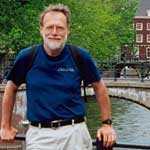 David A. Hollinger, Preston Hotchkis Professor of American History, University of California – Berkeley
David A. Hollinger, Preston Hotchkis Professor of American History, University of California – Berkeley
Religion is too important to be left in the hands of people who believe in it. Finally, historians are coming to grips with this simple truth. Why this has happened and with what effects may differ from period to period, continent to continent, and religion to religion. Here, I will comment on this transformation as visible in the field I know the best, 20th century United States history.
The careful and sustained study of Protestantism, Catholicism, and Judaism in this particular field has been carried out primarily by scholars who profess some version of the faith they study. This has produced some wonderful work, and I am not suggesting that belief is a barrier to successful scholarship. But this religious demography of scholarship does narrow the inventory of perspectives brought to the field, and once in place it is self-reinforcing: it can create the impression that religious history belongs mostly to the religious, and that historians of a more secular orientation will compromise their secularity by getting involved at all. The current increase of interest in religion on the part of scholars in this field follows in large part from the breaking of the connection between belief and the object of study. Just as we have lots of studies of Nazis by people who have no sympathy for Nazism—to use an extreme example to make the point—so, too, can we have studies of Presbyterians by people who have no commitment to Presbyterianism and may indeed find its influence on American life to be more pernicious than not.
Having argued in workshops and symposia over the course of many years that religion needs to be studied more extensively (see, for instance, the Journal of American History, September 2003), I found that a major obstacle was fear on the part of my colleagues that they would be taken by others to have bought into all that God and Jesus stuff. Nonsense, was my response; there is room for all honest scholars. What turned the tide? Not my argumentation, which long fell on deaf ears. I suspect the big thing has been the increased role that publicly displayed religious faith has played in American politics during recent elections. Religion is harder to ignore if it keeps coming back and hitting you again and again. Thanks, Sarah Palin (and Rick Warren, and Rev. Wright, and yes, even Barack Obama).
______
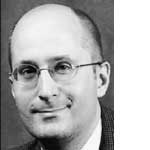 John Schmalzbauer, Associate Professor of Religious Studies and Blanche Gorman Strong Chair in Protestant Studies, Missouri State University
John Schmalzbauer, Associate Professor of Religious Studies and Blanche Gorman Strong Chair in Protestant Studies, Missouri State University
This week’s report on the “religious revival” among American historians should not be viewed in isolation. Far from being unique to the historical profession, it is the latest in a series of religious comeback stories. Since the 1980s, articles on the return of religion have appeared in a dozen disciplines, including art, English, philosophy, music, political science, social work, medicine, history, and sociology.
Such articles often assume a familiar narrative structure: Once upon a time, secular academia had little interest in the sacred, except in neglected subfields on the periphery of the major disciplines and in the religious ghetto of church-related higher education. Near the dawn of the millennium, events at home and abroad conspired to bring religion to the attention of the academic guild.
Usually such articles mention the rise of the religious right, the influence of global Islam, the fall of the Soviet Union, the advent of post-modernism, and the events of September 11, 2001. They often conclude by questioning the utility of the secularization thesis, replacing the decline-of-religion storyline with a story of religion’s resilience.
I know because I have written such an article. Together with historian Kathleen Mahoney, I am co-authoring a book on the return of religion in American higher education. Our research has led me to accept the basic outlines of the religion comeback story, not just in history but across the disciplines. The “religious revival” in the American Historical Association runs parallel to similar developments in the American Political Science Association, the American Philosophical Association, and many other scholarly organizations. Renewed attention to religion is reflected in the profusion of centers and institutes, religion-oriented scholarly associations, journals of religion and fill-in-the-blank, and generous philanthropic foundations (at least until the current recession).
Just because a narrative conforms to a standard plotline doesn’t make it false. It may mean that the storytellers are responding to similar events.
And yet, it is important not to exaggerate. Like much of the scholarship on the secularization of the academy, narratives of religion’s return are given to overstatement. Those invested in the religion business are often tempted to overplay their hand. This is a particular danger for scholars who are themselves religious.
According to the American Historical Association survey, just 7.7 percent of historians expressed an interest in religion. In other disciplines, the proportion is even smaller. If there is a comeback of religion (and I believe there is), it is limited in its size and scope.
Those tempted by triumphalism should remember that we have been here before. In the years following World War II, many spoke of an academic revival. Writing in the New York Times Magazine, the theologian Reinhold Niebuhr cautioned against reading too much into such developments, noting that “our own commitments and sympathies, whether for or against particular movements, color our judgments and tip the scales in which we weigh the evidence.” In evaluating the AHA survey, we would do well to heed his warning.
______
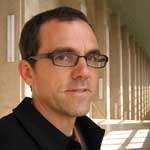 Jonathan Sheehan, Associate Professor of History, University of California – Berkeley
Jonathan Sheehan, Associate Professor of History, University of California – Berkeley
Historians have always studied religion, it seems to me. Certainly this is true in my field of early modern European history. Social historians of the previous generations—in, say, the 1970s, when only 1.4% of historians identified religion as a specialization, according to the study—spent much time and labor trying to understand the relationships between religious phenomena and social change. In fact, the great era of Reformation studies precisely maps onto the low period of claimed interest in things religious.
So what seems most interesting about these findings is not that we are attending to religion with renewed zeal. Rather, it is the eagerness of historians (myself included) to hitch ourselves to the religion train, to declare ourselves historians of religion, rather than historians who happen to study religious events, people, or phenomena.
Two data points stand out, in this regard. First, that religion topped culture as the area of prime interest. Second, that the area with the most dramatic decline in the past few decades has been that of social history.
In part, this is a story of historiographical transformations. Cultural history made huge inroads against social history in the 1980s and 90s, but now has receded into a general background in historical studies, less controversial and less cutting edge than it was twenty years ago.
It is also a story of changing intellectual commitments, however. Religion, which had before appeared as just one feature of a wider cultural and social landscape, has now become an autonomous subject with its own rules and transformations. This has brought great advances to its study: historians are less and less willing simply to convert religion into a epiphenomenon of other forces, social, political, economic, and so on.
But there is a more problematic side too. In an era of apparent desecularization, the thesis of religious autonomy—that religion is a durable feature of the human being, modern and not—has never seemed more attractive. Whether it is 9/11 or modern evangelical politics, world circumstances lure us into believing in belief. They lure us into believing that, beyond the social, political, and cultural, there is a certain something, an area of faith, that stands apart. But of course, this is exactly what religions have always said about themselves. If historians don’t want to do the work of religion, then I think we have to reserve judgment on the thesis of religious autonomy. Take up religion, but take it up lightly.
______
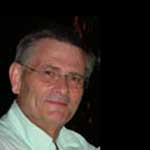 Grant Wacker, Professor of Christian History and Director of Graduate Studies in Religion, Duke Divinity School
Grant Wacker, Professor of Christian History and Director of Graduate Studies in Religion, Duke Divinity School
The mounting interest in American religious history in graduate history programs stems from at least three sources. The most obvious is the growing visibility of religion in the nation’s public life. Though religion always had served as a powerful force in the nation’s affairs, in the past fifty years—from the charged 1960 election forward—religious people started to vote in such predictable ways that the mainstream media began to pay them serious attention. In addition, to many thoughtful—and some not so thoughtful—observers, the emergence of the Christian Right in the 1970s and the religious forces behind 9/11 seemed especially conspicuous and alarming.
A second factor is the stubborn resilience of religion in the face of secularizing pressures. Notable examples include the proliferation of mega-churches, the insurgence of populist denominations such as the Assemblies of God, the Latter-day Saints, and the Southern Baptists, and the post-World War II influence of three world-historical religious leaders: Martin Luther King Jr., Billy Graham, and Pope John Paul II. Mega-churches won attention for the simple reason that 10 churches with 2,000 members were more visible than 100 churches with 200 members. The populist denominations’ growth coincided with the simultaneous decline of the mainline bodies. While the former trend did not come at the expense of the latter (it represented different fertility and retention rates, not switching), to the media and many ordinary observers those developments signaled the aggressive swelling of religious strength. Finally, it would be hard to find any other period of U.S. history that witnessed three leaders who captured the hearts and minds of millions of Americans as King, Graham, and John Paul did.
A third factor, largely invisible to the media, but probably the most important of all, was the emergence in the last third of the century of more than a score of historians and historically minded sociologists of religion of singular distinction. Though they received their training in a variety of programs—history, religion, sociology, English, or American Studies—all adhered to rigorous historical method. Some publicly identified themselves with a specific religious tradition, some carefully avoided the topic, and some made a point to declare themselves personally non-religious. Yet they repeatedly garnered the most prestigious awards the profession had to offer. With such mentors showing the way, it is little wonder that a rising generation of historians would find religion a compelling field of study.








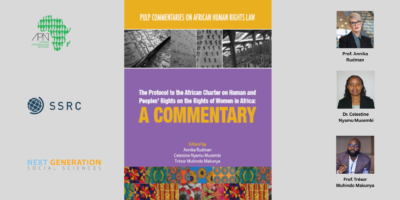



At the risk of accusing such a distinguished group of historians and commentators that they are parochial, it nonetheless seemed that they either deliberately, or unconsciously, stayed pretty close to the theme of the return of religion to American history, while tending to ignore that religion as a growing element in contemporary affairs is a world wide (or global, in today’s jargon) phenomenon.
I am sure they are all aware of that simple statement, and that they were asked to comment on religion in American history and its surprising resurgence, and so left the global aspects aside. But it is worth mentioning, since we do live in a world almost without borders in some areas, especially in the use of technology to communicate, via the Internet, etc.
I know Christianity better than I do any other religion, so I really cannot speak to the global dimensions of, for example, modern Islam, but in the case of Christianity, certain modern expressions (evangelical, charismatic, Pentecostal, Word, etc.) have transformed the cultural and religious landscape in Latin America (which I do know something about), and I read about the same phenomenon in Africa and Asia. It would be interesting to take the pulse of historians and other students of society and politics for example in other parts of the world and see if the same phenomenon is taking place there, in Cuba, or Vietnam, or Uganda, or South Africa, or Argentina—pick your place.
If it is, then compare it to what is happening within the United States; and, even more interestingly, ask, where are the origins and impulses of the new interests? Are they radiating out from the metropolises (in the U.S. and Europe, for example) as in the past century or two, when the West more or less set the pace (for better or worse) of modernization and “progress,” or are we in the U.S. following trends and momenta coming from abroad?
Well, I’m just thinking out loud with my hands on the keyboard. Thanks for the thoughtful commentary and analyses expressed by the respondents above.